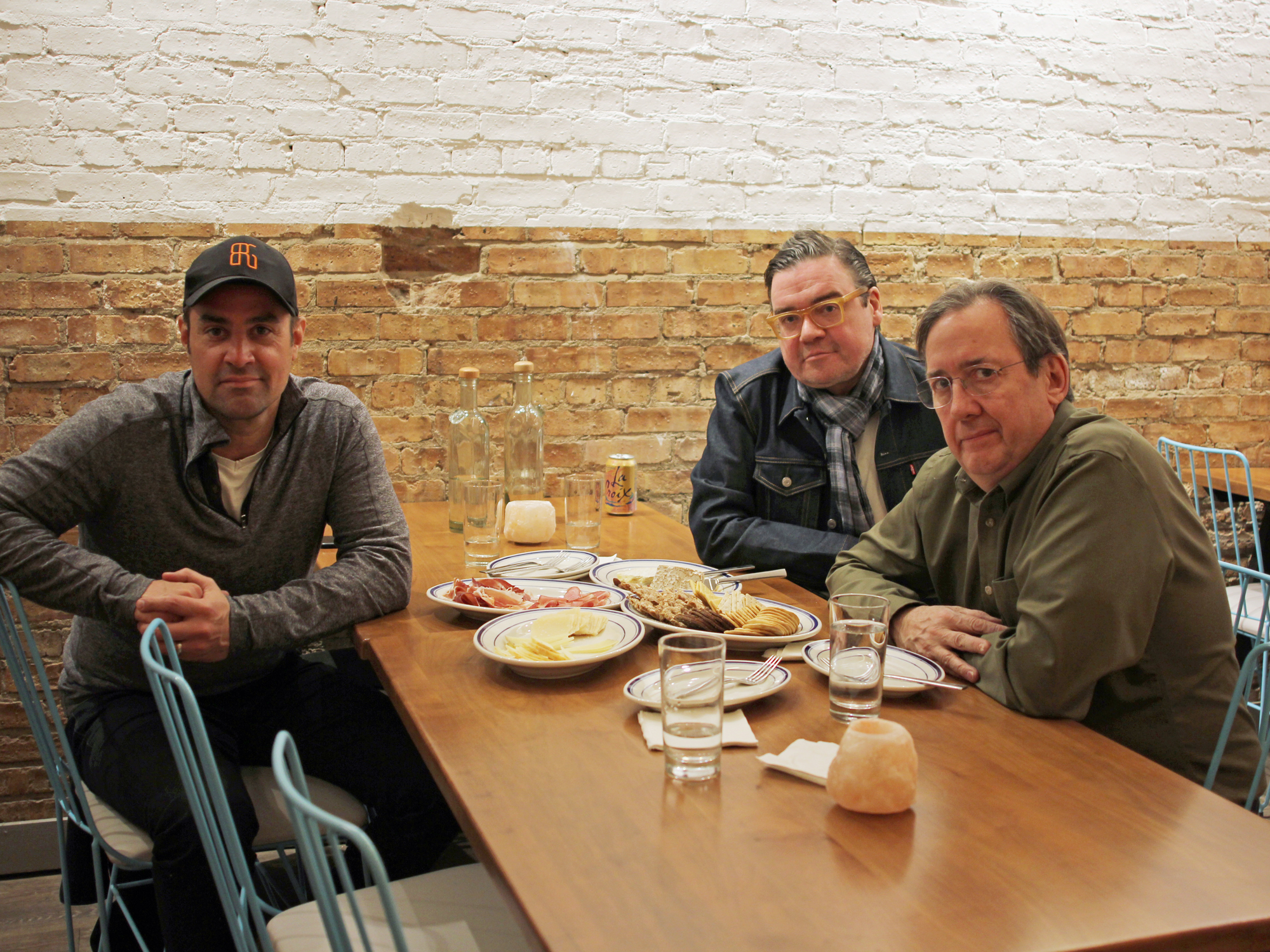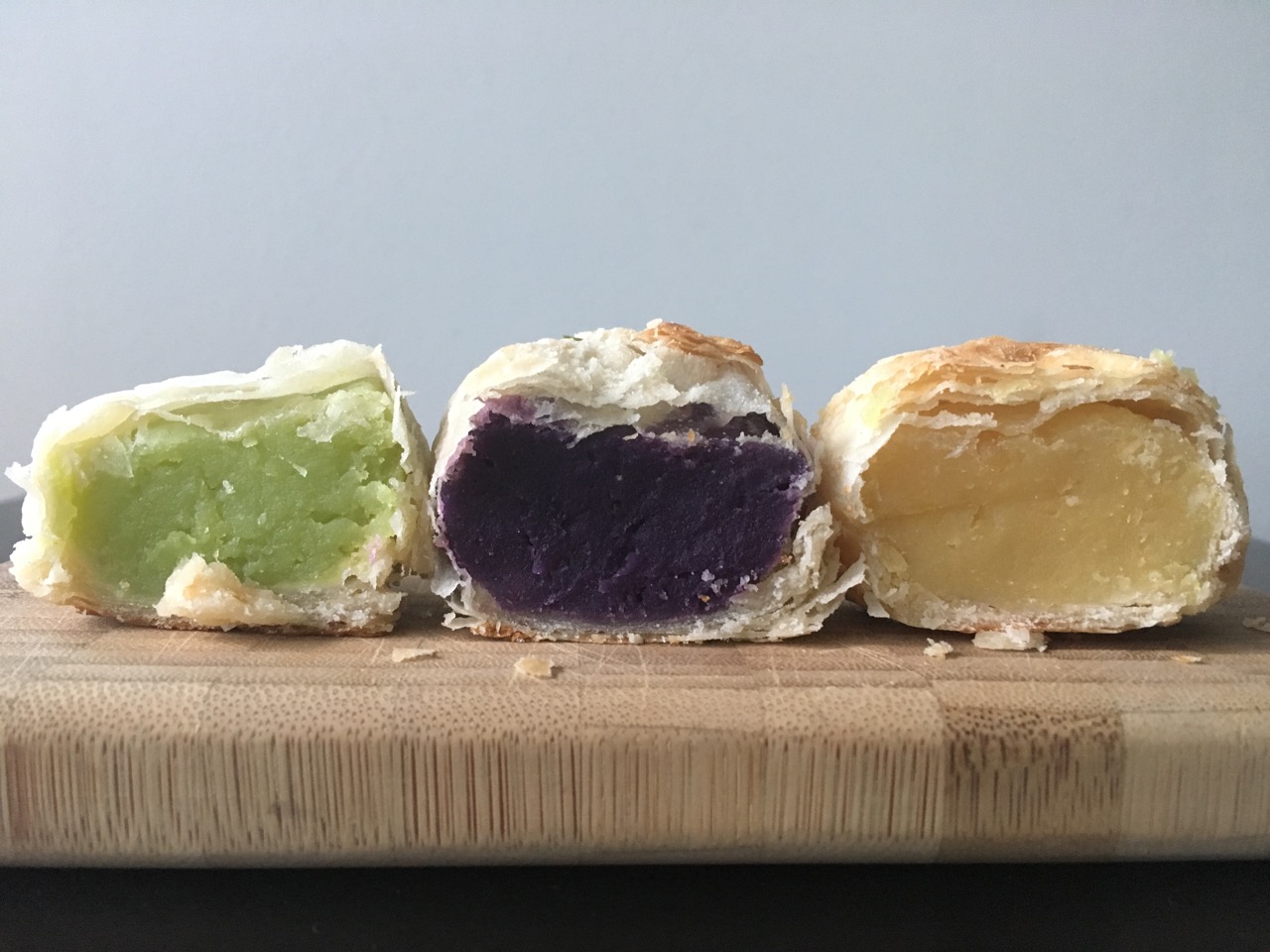I’M TALKING WITH RAY ESPIRITU, THE YOUNG, SPIKY-HAIRED owner of Isla Pilipina, or just Isla (“eesla”) as the new neon sign in street-art script calls it. We’re talking about the litany of base dishes that make up a typical menu for a Filipino restaurant, and I bring up the influence of the U.S. Navy—how things like Spam got into Asian cooking in places like Hawaii and the Philippines.
“Must be some kind of war, or colonization period, that happened,” he says, deadpan.
It stops me in the middle of whatever point I was trying to get to. Because the imbalance in any conversation like this has just come crashing down in the middle of it—oh, right, we’re the imperialists. Sorry, I forgot. I was just bringing up the U.S. Navy as one of those funny little influences that happened in food history—it could have been something equally benevolent, like Catholic missionaries or rock and roll.
But of course you don’t look at it that way if you’re from the Philippines. The Philippines is a relatively small thing to America, one of the many places in our sphere of influence that we acquired imperially, as a 19th century historian put it, “in a fit of absence of mind.” But to Filipinos, America is a Jupiter whose gravitational pull is always there.

The Bakunawa, a serpent who eats the sun or moon, causing eclipses.
And I see this often in talking to Filipinos relating to food, something that happens more and more. They’re as assimilated as immigrants in America get—English-speaking, educated, the younger ones savvy about communicating in the language of Western pop culture. They’re also defiant and a bit prickly about maintaining their Filipino identity in America. They want others to know their food culture, which has long been less accessible to Anglos than Chinese or Thai. At the same time, speak the cliché about Filipino food being the next hot Asian cuisine and they’ll roll their eyes, if not accusing you of colonialism for thinking a cuisine shared by 100 million people needs your Columbusing, white man.
A little of all of this comes out while I talk to Espiritu, which is not to say that he is not a genial host the whole time—he is. Isla Pilipina is as welcoming as about any place I know, and deservedly packed on weekends (enough to make you think Filipino is the next…); it deserved the Jean Banchet Awards nomination for Best Ethnic Restaurant it got last year, too. There’s just more here about being Filipino in America under the surface, and it doesn’t take much scratching to find it.
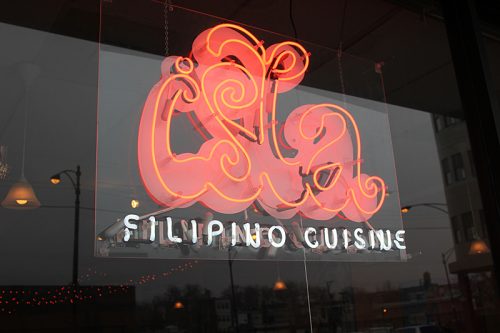
BEFORE ISLA WAS RAY’S RESTAURANT, IT WAS his parents’—and I came Columbusing into that one, too, way back in 2004, reporting back to LTHForum (where discovery and conquest of such new lands was highly prized). It was a simple steam table restaurant in a multicultural strip mall with, as I recall, undecorated white walls; the main thing it had to offer was “Mike’s fried chicken,” a recipe reportedly inherited from a previous owner in the spot. (If you want to talk how a nondescript space like this can incubate immigrant businesses, note that Isla isn’t even the first business in this strip mall to get Fooditor attention.)
Ray’s parents owned it from about 2002 to 2007, he recalls, and then he took it over and started remaking it in his image. Retired now, his parents mainly spend their days playing with his nieces, he says; he’s the kid who hasn’t produced grandchildren, so “they come in once in a while and it’s like Hi, I’m Ray, your son, remember me?”
He took it over in 2007. “I came fresh out of art school. So right away, my instinct was—I have another platform for expression,” he says. (He speaks in short telegraphic bursts like that.) “I can learn something I already like, which is the cuisine, I can change it up however I want. Zero budget—but of course in the back of my head is, I hope we make enough money today so I can open the doors tomorrow.”
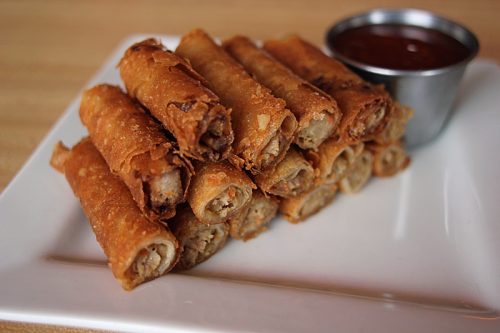
Lumpia
“I never had a long term plan—this is what I want it to be in 5 years. I was always just, let’s see how it goes for now,” he says. “22, 23, I was still naive—well, more than I am now.”
Just as his parents were transitioning out of the restaurant, the chef they had suddenly died. They found a new one in Mario Nuñez, who had worked for a popular restaurant called Bar y Fiesta in the Philippines, and then went to California to open a second one. He proved to be the teacher that Ray, who had only done basic cooking with his mom, needed, and he’s still in the kitchen to this day.
How long is your food going to be the next big thing? We’re open, are you gonna try us or not?
“The first days, months, that we opened, there wasn’t a lot of customers, it would just be me and him. For a couple of years, it was just the two of us, working on this thing, trying to perfect it,” Ray says. “For any Filipino restaurant, there’s a set of dishes that you just need to have. Mixed adobo, that’s a go-to dish, pancit bihon. Sisig, which is fairly new, we just put that on a year ago. Lumpia, lechon kawali.”
I ask him if he does anything different in how he prepares the dishes, or if they’re prepared traditionally. “Traditional is a weird word, right?” he says. “There’s lots of different cultures and languages. It’s definitely comfort food, and it doesn’t deviate from that too much. There’s like a basic structure, that feels right,” he says, then adds, “But it’s our style. End of story.”
Having acknowledged the colonialist effect of America that gave Filipino cuisine a spaghetti made with sliced hot dogs, Ray moves to the Chinese influence. “We still maintain a chop suey dish on the menu. I read that a lot of the merchants could only afford leftovers from restaurants. So it’s just chopped up vegetables left over at the end of the day.” He shrugs, quizzically. “Eh, it went both ways. I don’t know how mutual it was, it just kind of happened, the meshing of cultures. Or am I being too kind?” he laughs.
Business slowly picked up, and he credits social media for bringing him a Filipino clientele, and for making his place accessible to a non-Filipino one; an enthusiastic review from Michael Nagrant helped, too. On the other hand, he faults Michelin’s review for mentioning a TV that, if his parents even had it at all, has been gone for a decade. “I don’t remember having one. I don’t even think my parents have one now,” he says. “If they do, it’s permanently showing Frozen.”
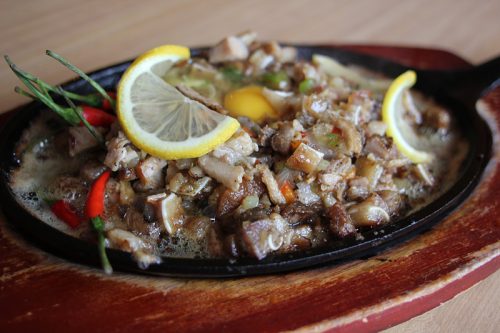
Sisig, fried pork off-cuts
I ask him why he thinks he was able to break through to a non-Filipino audience, and he asks me why I think he was. Other than saying that the highly scarfable lumpia (a kind of mini egg roll) are close to being the chicken satay, the gateway dish of Filipino food (God knows my kids can eat them by the fistful), I don’t really know.
He bristles a little at the thought of being accused of making a dumbed-down dish to lure the gringos in (though every cuisine has one, sooner or later). By contrast, he points to the sisig, a pungent garlicky stew of grease and offal bits (cheek, ear, belly), which fairly screams “Not for you, Americans.” (It’s delicious but so rich, I tap out after a few bites; no one who hasn’t been doing hard physical labor all day should eat a whole plate of it.) “I mean, how long is your food going to be the next big thing?” he says. “We’re open, are you gonna try us or not?”
“We want to be successful, like all restaurants, but I don’t want it to not be special,” he says. “Not like Chinese, where it’s the same everywhere and you just walk in and walk out. I think people have subconscious expectations, south east Asia, it should be like Chinese. But we’re territorial about it. We’re not going to throw something between two buns—we’re not going to do that.”
He says that, and then maybe remembering that he comes from a culture that put hot dogs in spaghetti, he says, “I mean, I’m not totally against it. We play around and we make sisig tacos, and they’re amazing. But I wouldn’t put them on the menu.” He says that, and then he thinks for a second. “Maybe just one weekend.”

Ray, still shocked by what springs out when you raise Barrel Man’s barrel.
ONE REASON ISLA PILIPINA HAS FOUND ITS AUDIENCE might be the decor in the front of the house, which has been Ray’s studio and environmental art piece, smart colored walls replacing the white box he parents first rented. He points out a serpent (from Filipino mythology) on the menu as a symbol for the restaurant, and then the painting it inspired on the wall. The colorful walls and the hip paintings—sometimes his own, currently by artist friends—do as much as anything to bridge the cultural gap, assuring white north siders that this place won’t be too far out for them. Asian restaurants often hide who they are behind generic art, but thanks to the art, Isla Pilipina has long felt like there were real people there.
At a certain point he goes over to a case of knickknacks, the kind of souvenirs of the homeland that you often see in ethnic restaurants, to help set the scene for the taste of the native land that you’re getting. Ray’s collection is more eclectically modern, encompassing CDs, books, comic books—an individual’s collection of what matters from his home. Though the first thing he shows me is classic tourist stuff—a little statuette from which springs, when you pull up the barrel around the figure, a very erect penis.
“It’s called Barrel Man. There’s one in every household,” he says. “There’s a female version too. I need to see if there’s a transgender version.”
There’s a comic book by a Filipino artist, and a book by the 19th century leader and patriot José Rizal, and some chocolate-covered pretzels in a box that looks like movie candy more than a snack. There’s a CD he describes as “Filipino death metal,” and a DVD about a kind of Filipino vampire. It’s a little goofy—yet, like a kid showing off his stuff in his room, vital to knowing who he is as a Filipino in America.
Keeping Filipino culture alive in the restaurant is a duty to Espiritu. “Internally, we try to educate our staff, we educate each other,” he says. “Maybe it’s redundant, but we need to recall our culture, remind ourselves why we do it, why we’re here.”
Michael Gebert is the panic bison of Fooditor. At least, that’s what auto-correct said every time I typed pancit bihon.
Latest
Join the Discussion
After you comment, click Post. If you're not already logged in you will be asked to log in or register with Disqus.





